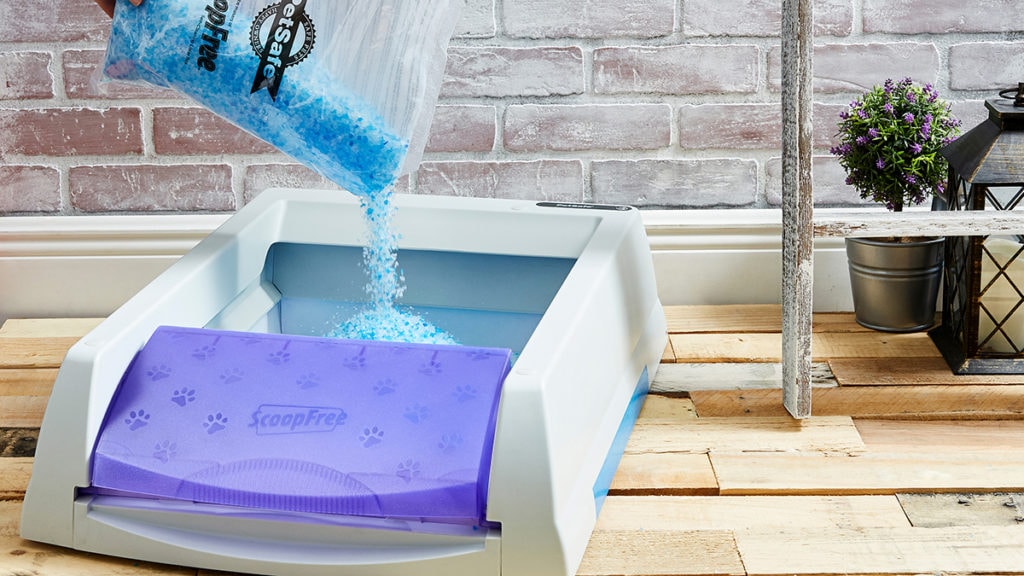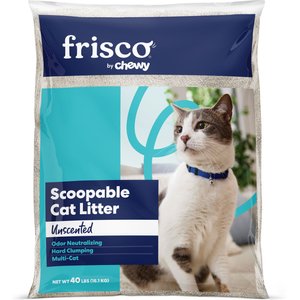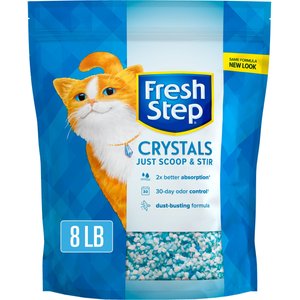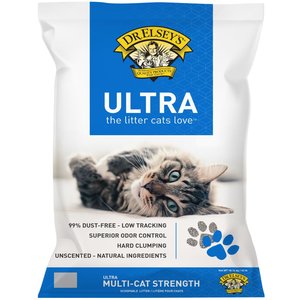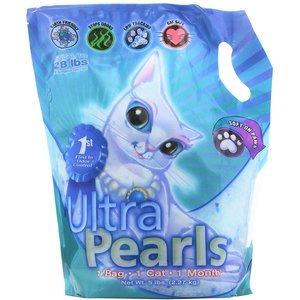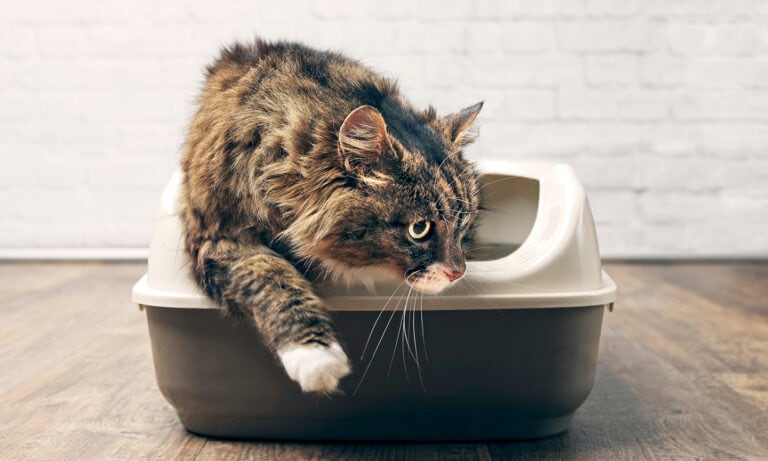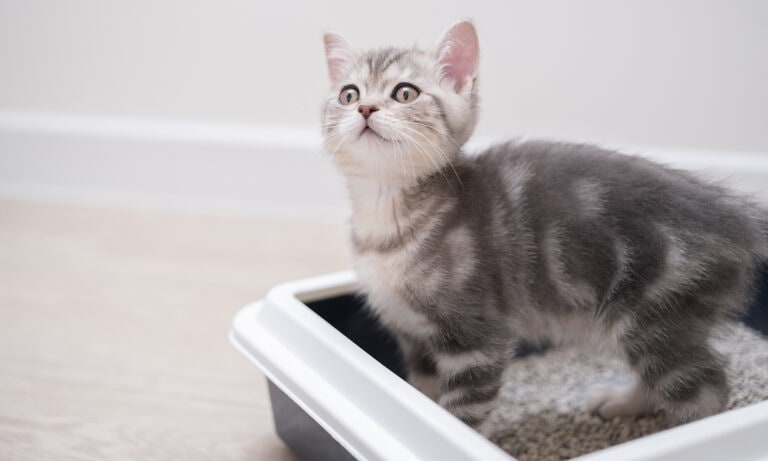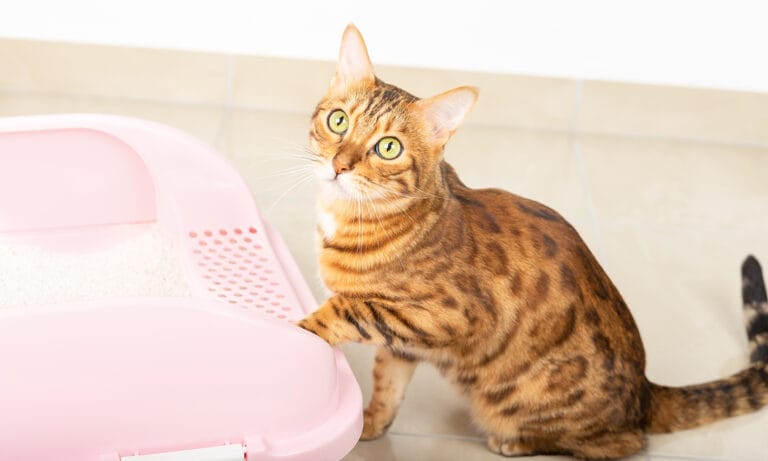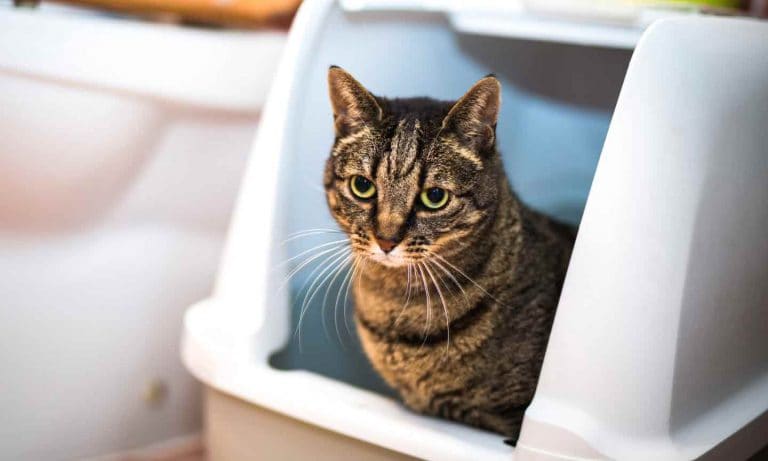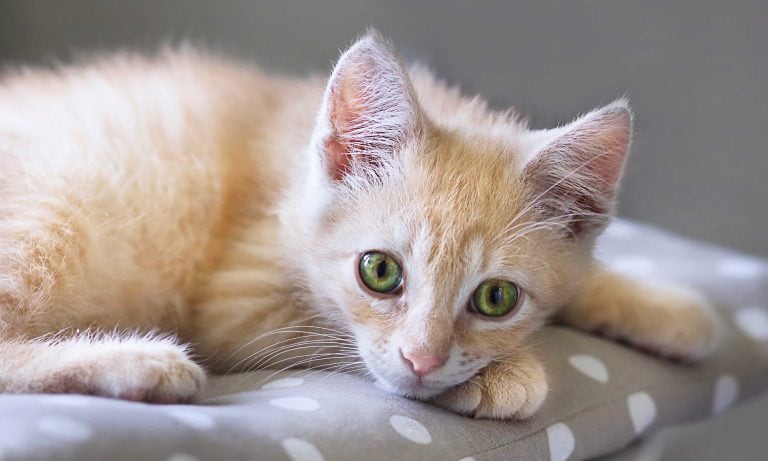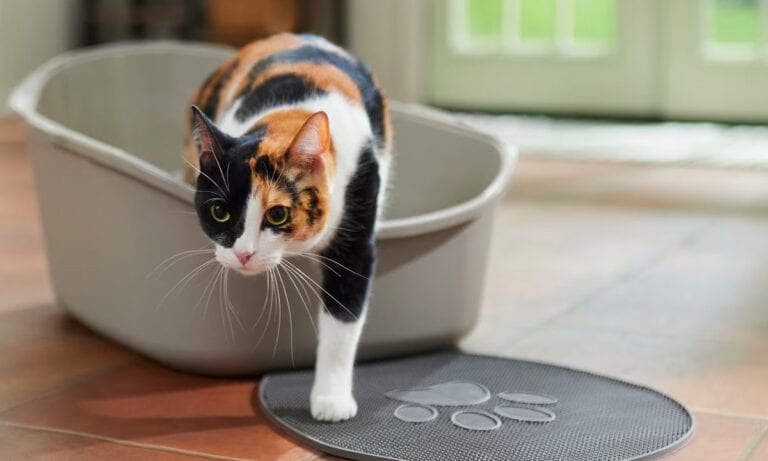Choosing which cat litter to use for your feline family member can be a tricky and confusing task. There are so many options, and they all offer different advantages. Two popular kitty litter options are traditional clay litters and crystal cat litter, also known as silica cat litter. Dr. Ari Zabell, DVM, DABVP, of Banfield Pet Hospital, tells us about cat litter composition so you can find which is best for your kitty.
For the health and well-being of our feline friends, it’s important to know the cat litter composition for each type and how well clay and silica litters deal with odor, dust, tracking and other litter box-related issues.
“Clay and silica cat litters both have their advantages,” says Dr. Zabell. “I’d recommend considering whether your cat has a preference, as well as any medical conditions that could be worsened by one ingredient or the other.”
What is Kitty Litter Made of?
To better understand these types of cat litters, it helps to understand what they are made out of. Clay litter generally comes in two formats, non-clumping and clumping. Conventional clay litter is made of Fuller’s earth, which is basically any clay material that can absorb its weight in liquid. Clay clumping litter, like Frisco Multi-Cat Clumping Litter, is made of natural bentonite clay granules that clump together when liquid is absorbed. Clumping litters may also contain quartz or diatomaceous earth, which has smaller, finer granules.
Silica gel crystal cat litter, like Fresh Step Crystals Premium Cat Litter, is made from sodium silicate sand that is processed with oxygen and water. The result is a bead with tiny pores that allows it to absorb around 40 times its weight in liquid. These beads are similar to the desiccant “Do not eat” packets you find in medications, shoes and other products that need to stay dry. But in silica crystal litters, they are specifically formulated to be safe for cats and do not contain crystalline silicate, which can be harmful to cats.
Odor Control
When it comes to choosing the best cat litter for your home, odor control is one of the most important factors. Conventional clay and clumping litters are fairly absorbent, but due to their granular size, they can saturate quickly. Some brands add baking soda and other deodorizers, but once saturated, clay needs to be changed or scooped at least every day to effectively control odor.
Be aware that some cats are sensitive to certain perfumes and deodorizers which can cause them to go outside their box, Dr. Zabell says. You can try different scents to see which she will tolerate, or choose an unscented option.
Silica crystals are big and porous, making them effective at odor control. While they look solid, they are actually filled with a network of small hollow channels that immediately absorb moisture as they come in contact with liquid. The liquid or moisture is trapped inside, thus leaving the outer layer dry to the touch. Once absorbed, the moisture will begin to evaporate, leaving the odor-causing molecules trapped within the inner channels. The absorbency capability of the beads is continuous, so most litters can work for up to a month for one cat.
To operate at its most efficient, silica litter needs to be deep enough for the urine to not reach the bottom of the litter box so it can be absorbed effectively. Solid waste can be scooped out daily, and silica litter needs to be raked daily to allow moisture to evaporate from all the silica crystals. But because silica litter doesn’t clump, you must dump the entire box at once to clean it thoroughly.
If changing out litter once a month sounds like a chore, try a self-cleaning litter box option like the ScoopFree Original Self-Cleaning Cat Litter Box and ScoopFree Litter Tray Refills with Premium Blue Crystals.
Dust and Tracking
Dust can cause respiratory issues for you and your cat or can trigger existing ones, like asthma. That’s why it is so important to find a litter with dust control.
Many clay litters are 99% dust-free for easy breathing, like Dr. Elsey’s Precious Cat Ultra Clumping Cat Litter, which is specially formulated to be virtually dust-free. They are also low-tracking to cut down on trails coming from a cat litter box.
Silica crystals contain little to no dust as well. And because of the size of the crystals, your cat is also less likely to track litter around the house. Many silica crystal cat litters, like Ultra Pearls Crystal Cat Litter, specifically design their beads to prevent them from becoming lodged in a cat’s paws, in order to limit tracking.
Texture
Conventional clay feels like sand, which can entice cats to use their litter box. The large granules typical of clay litters are less likely to get stuck in between toes, which can make the experience more comfortable for your cat. Clumping clay litter is fine and soft on feet, but it is not recommended for kittens, especially those who may ingest the litter.
Because crystal litters are made of crystal chunks, some cats may be hesitant to step on it, while others readily use it. If you find your cat resists using a litter box with crystal litter, try a litter attractant, like Fresh Step Litter Box Attractant, to allure her. Or try clay litter.
Which Cat Litter to Use?
While both clay and silica litters have their pros and cons, the choice of which cat litter to use really comes down to your cat, Dr. Zabell says. Try different types of litters to see which one your cat favors, and consult your veterinarian if your kitty isn’t using the box, because there could be an underlying medical reason.

Chris Brownlow has been writing about pets for over 10 years. As a writer who believes in immersing herself in her topic, she has tasted more than 20 different flavors of dog and cat food while working on an advertising campaign for PetSmart. Prior to her pet days, Chris was a print and digital journalist at The Tampa Tribune and The Virginian-Pilot.
Share:
